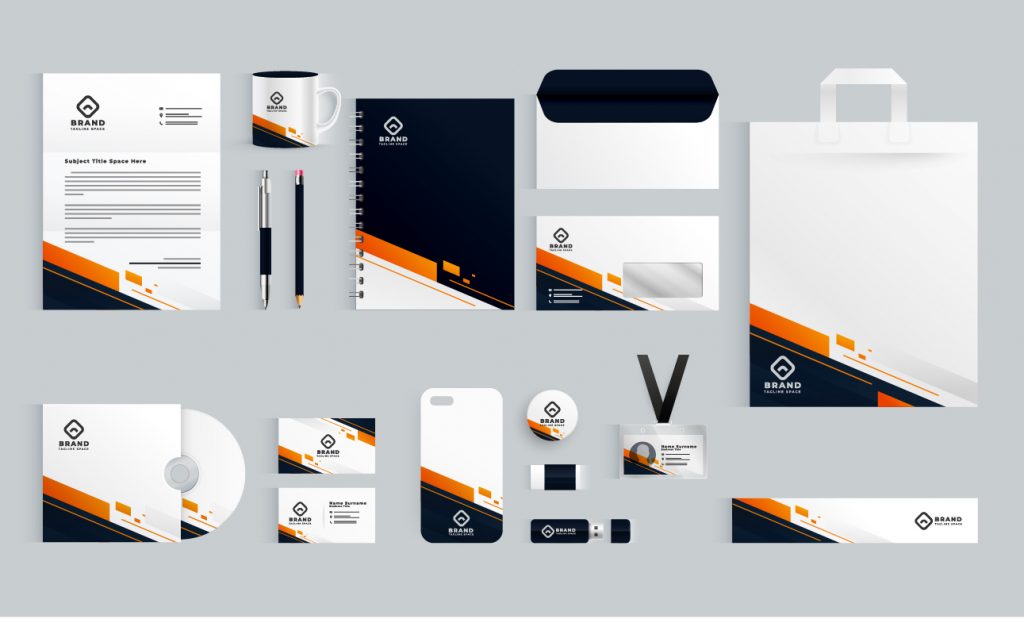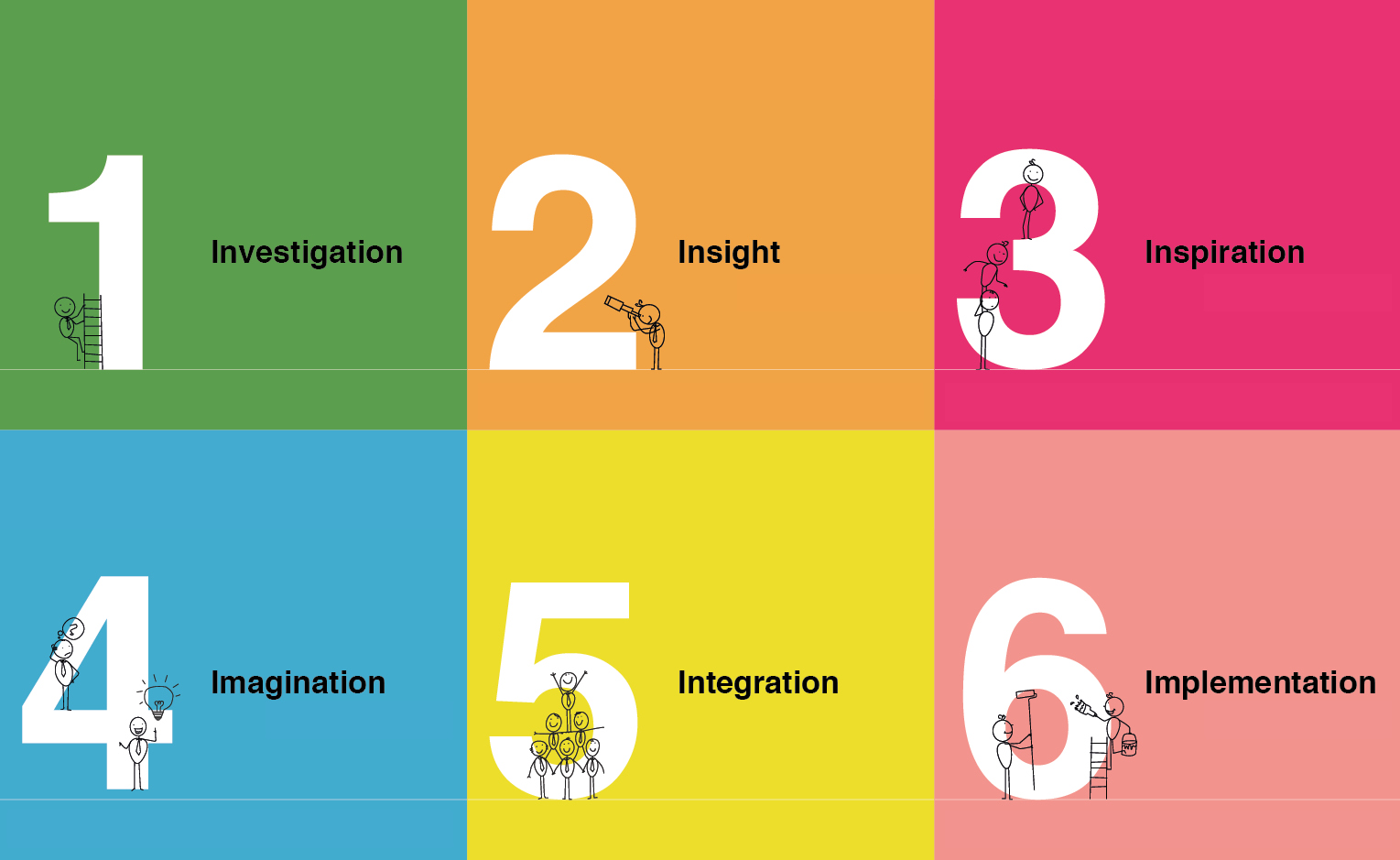As a full-service creative and branding agency, we know the importance of following a clear branding process to establish a strong brand. The brand should underpin the company’s (& its products’) values. It augments the company’s personality and behaviours. It separates the company from its competitors. All of this helps attract & shape customer buy-in and belief.
Of course, a brand is so much more than the company logo alone. It is the look & feel of the marketing collateral, the imagery style, the angle of the messaging and the tone of voice. It can include the company methodology, the pricing policy, the quality of a product, the colour of the salesperson’s tie, even the type of car they drive. The list can go on. And it often does.
The Branding Process
In order to create a strong and relevant brand, it is imperative that there is always a clear branding process in place. And this is true whether the brand request is just for a name, a logo or the full brand styling. With an unlimited number of creative options that could be designed, a structured process will always deliver a better, stronger & more relevant brand. Having a clear branding process in place achieves many things but primarily:
– it streamlines the branding journey
– it provides reasoning to the brand creative
– its establishes focus & direction
– it sets expectations to the client
Without a clear process, the branding project is more than likely to veer off course. And this can be costly in terms of time, budget and patience.
Whilst all branding agencies work to their own processes, the vast majority will share the same three core stages and this is true whether the new brand is for a start up company or an established company with existing brand equity:
Stage 1: Strategy
Stage 2: Concept
Stage 3: Implementation
STAGE 1: Strategy
This is the initial stage wherein the agency carries out investigation to:
a) gain a level of insight into the company
b) establish a creative way forward
Often this commences with a chat, a questionnaire or a workshop to gain information regarding the company, its history, personnel, products & services, USPs, the market, etc. Moreover, it is also useful at this stage to also gain an understanding of the company’s own preferences and mandatories. It is their brand, after all.
Different agencies (as well as different budgets) may dictate the level of insight they aim to gather but this insight is carried out to enable the branding agency to establish the company’s core drivers, values and personality. This detail can, in turn, be shaped into the ‘brand proposition’ – a unique way of describing what the company stands for and how it can solve the audience’s needs.
STAGE 2: Concept
The concept stage is the second stage in the branding process wherein the agency can:
a) use their insights to establish the creative brief
b) devise the creative concepts
Often, a creative brief is written to provide some insight as to the different creative ‘directions’ that may be considered. Not all agencies do this – as the creation of a brand can best happen when the designer has more free rein. However, when up against budget and / or time, this is extremely good practice as it serves to establish creative focus and to get the client’s buy-in from the start.
The importance of the creative brief should never be underestimated. Having agreement on the focus of the creative concepts removes any potential of backtracking, U-turns or trialling outside ideas.
Of course, the description of the creative ‘directions’ within the brief may be as wide or narrow as the agency thinks best. The brief may stipulate the exactly design concepts they will create or it may be that the agency simply makes references as to which company value(s) the design concepts will mirror. For example, the agency may suggest the concepts will instil a feeling of ‘technology‘ or ‘safety‘ or ‘community‘ or ‘speed’, etc).
At this stage, it is useful to get client agreement on the creative brief. Ideally, the agency should would want the client to be engaged and on board throughout the process.
With the directions agreed and in place, the brand designers can do what they do best – building a number of brand logos & styles. Different agencies offer different number of concepts; some may focus on one or two, others may present five or six whilst there are many agencies who may present much more than this.
Moreover, different agencies will present the concepts to their client at different stages in its development. These could simply be in ‘scamp’ stage (ie, a drawing or sketch of the ideas), just the initial brand logo or full brand style designs.
However the agency decides to present the brand concepts, they should provide some rationale for the work, along with insight as to where the design development can take them. This presentation stage enables the client to provide much-needed feedback which, in turn, allows the agency to narrow down the number of concepts that move to development – with the ultimate goal being that one final brand style is approved.

STAGE 3: Implementation
Having a brand logo or full brand styling created is one thing. But, implementing this into the real world is another. Again, each agency is different but it is expected that, as part of the brand design, some real-world examples would have been presented. Some branding agencies may simply show how the brand would look on some stationery items. others may provide examples for literature, packaging, advertising or website home page for example.
It is always useful if the agency, as part of their branding process, provides a brand guidelines document along with the delivery of the brand. Not only does the brand guidelines describe the make-up of the logo and assets (font, colours, sizes, positioning, etc) but it can also showcase how the wider brand assets (imagery, patterns, shapes, backgrounds, etc) should be utilised. Moreover, a more in-depth brand guidelines document will also highlight how the company collateral should be set up, providing exact rules on the design.
In many cases, where a dedicated branding agency is used, they may only work on the brand creation itself, leaving another design agency to implement the brand onto the necessary collateral pieces, whatever they may be. In this case, the brand guidelines document is an invaluable asset for that design agency.
Of course, if the agency building your brand provides a full-service solution, they will be make the whole process seamless and support with the creation of all printed and digital assets too.
SELECTING AN AGENCY
There are many branding, creative and full-service agencies to choose from. However, when selecting an agency to work on your brand, please check they have a clear branding process in place and ask them to explain it.
It may be that there is a different process depending upon the level of support requested / budget available but, whatever the process, it is worth understanding:
– how many stages are involved?
– what is the strategy they use to establish the concept routes?
– how often and when can you provide feedback?
– will you get a brand guidelines document?
– does that agency offer more than the branding?
Design Inc is a full-service agency with branding at its core. If you are considering a new brand, we would love to hear from you
>> View our six-step branding process
>> Creating a Powerful Brand
>> Developing the Brand Name
>> The Importance of the Brand Audit
>> The Importance of Brand Guidelines
>> Branding Terms A-Z
>> View our branding case studies

